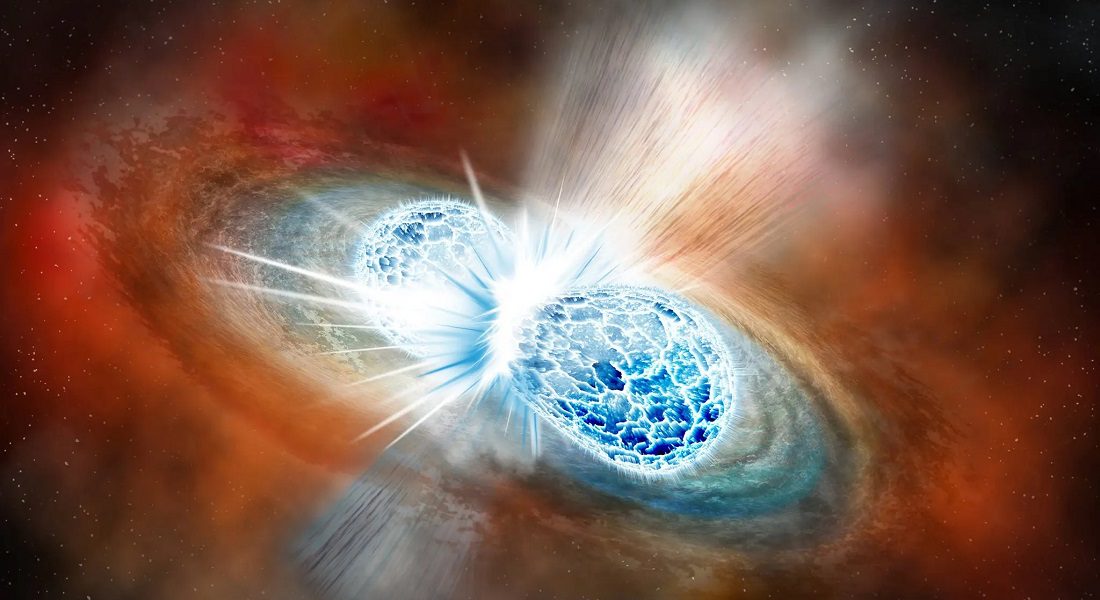Astronomers have been left stunned by a perfectly spherical explosion produced by a collision between two neutron stars 140 million light-years from Earth. Known as a kilanova, the enormous radioactive fireball was first detected in 2017 and is currently being analyzed by multiple teams of scientists, yet the latest revelation about its shape challenges our most fundamental assumptions about these cataclysmic events.
“You have two super-compact stars that orbit each other 100 times a second before collapsing,” explained Albert Sneppen from the University of Copenhagen in a statement. “Our intuition, and all previous models, say that the explosion cloud created by the collision must have a flattened and rather asymmetrical shape.”
However, in a new study, Sneppen and colleague Darach Watson, along with a team of researchers, reveal that the fireball produced by the collision was in fact spherical. “No one expected the explosion to look like this. It makes no sense that it is spherical, like a ball,” says Watson.
“But our calculations clearly show that it is. This probably means that the theories and simulations of kilonovae that we have been considering over the past 25 years lack important physics.”
Neutron stars are incredibly dense stars that consist mainly of neutrinos. When two of these compact bodies collide, they briefly join together before collapsing into a black hole. This process also leads to the creation of heavy elements like gold and platinum, which are ejected outwards into space as the kilanova erupts.

Artistic illustration of a kilonova. Image credit: Robin Dienel/Carnegie Institution for Science
Using the LIGO and Virgo gravitational wave detectors, astronomers first identified the ripples in space-time caused by kilonova AT2017gfo in 2017. Since then, Sneppen and Watson have been combining this data with ultraviolet, optical, and infrared light observations to determine the shape of the enormous burst of ejecta.
“The most likely way to make the explosion spherical is if a huge amount of energy blows out from the center of the explosion and smooths out a shape that would otherwise be asymmetrical” says Sneppen. “So the spherical shape tells us that there is probably a lot of energy in the core of the collision, which was unforeseen.”
The source of this energy is unclear, but the researchers speculate that it may be produced by the black hole that formed in the aftermath of the collision. “Perhaps a kind of ‘magnetic bomb’ is created at the moment when the energy from the hypermassive neutron star’s enormous magnetic field is released when the star collapses into a black hole,” says Watson.
“The release of magnetic energy could cause the matter in the explosion to be distributed more spherically. In that case, the birth of the black hole may be very energetic.”
In an unexpected twist, the researchers also say that perfect spheres like this kilanova could provide astronomers with a new tool to determine the age of the universe. Currently, such assessments are made using the so-called cosmic distance ladder, which is calculated based on the distance between different objects in the universe.
Yet Watson says that kilanovae may offer a more accurate measure for measuring the expansion of the cosmos. “If they are bright and mostly spherical, and if we know how far away they are, we can use kilonovae as a new way to measure the distance independently – a new kind of cosmic ruler,” he says.
The study has been published in the journal Nature.
Source Link: Perfectly Spherical Kilanova Following Neutron Star Collision Hints At Weird Physics